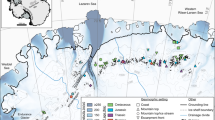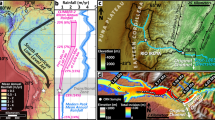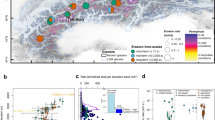Abstract.
The geologic evidence for worldwide uplift of mountain ranges in the Neogene is ambiguous. Estimates of paleoelevation vary, according to whether they are based on the characteristics of fossil floras, on the masses and grain sizes of eroded sediments, or on calculations of increased thickness of the lithosphere as a result of faulting. Detrital erosion rates can be increased both by increased relief in the drainage basin and by a change to more seasonal rainfall patterns. The geologic record provides no clear answer to the question whether uplift caused the climatic deterioration of the Neogene or whether the changing climate affected the erosion system in such a way as to create an illusion of uplift. We suggest that the spread of C4 plants in the Late Miocene may have altered both the erosion and climate systems. These changes are responsible for the apparent contradictions between data supporting uplift and those supporting high elevations in the past.
Similar content being viewed by others
Author information
Authors and Affiliations
Additional information
Electronic Publication
Rights and permissions
About this article
Cite this article
Hay, W.W., Soeding, E., DeConto, R.M. et al. The Late Cenozoic uplift – climate change paradox. Int J Earth Sci (Geol Rundsch) 91, 746–774 (2002). https://doi.org/10.1007/s00531-002-0263-1
Received:
Accepted:
Issue Date:
DOI: https://doi.org/10.1007/s00531-002-0263-1




